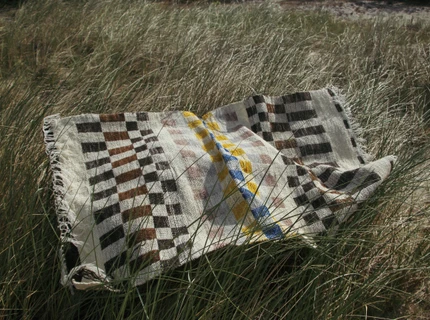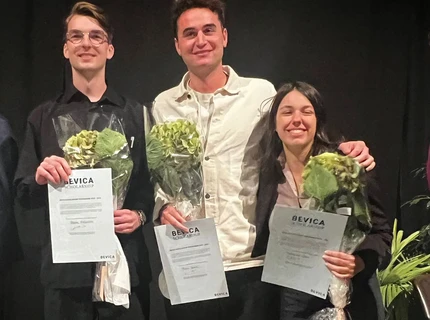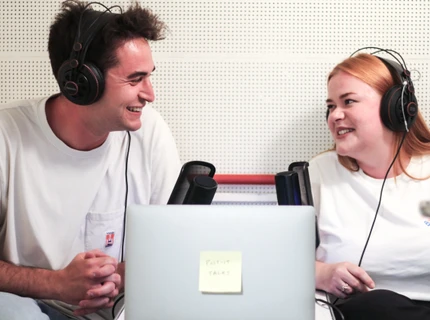
Designers are Fighting against Consumerism with Darning Wool, Recycling and Warm Feelings
One of the design tricks the new designers put into play is creating an emotional bond between us humans and the objects with which we surround ourselves with the aim of extending the life of the product.
Underwear with memories
Sustainability and responsible use of the planet's resources have been on Design School Kolding's agenda for decades, and, sure enough, environmental considerations permeate many of the students' graduation projects this year.
Several graduates from the Fashion and Textile Design programme seize the opportunity to repair their clothes – because, why throw them out and buy new ones, when repairing them makes the clothes usable again and at the same time attach us even more to the clothes? Ida Fabricius, for example, a Bachelor in Fashion and Textile Design, has immersed herself in repair techniques, which she displays in underwear – normally one of the categories of clothing that is most often discarded if it has become a bit worn or damaged. This is paradoxical, she says:
- Underwear is, literally, what is closest to us, the most intimate, a product that stores memories.
Children's respect for clothes
Beate Kjos, also a Bachelor in Fashion and Textile Design, goes beyond simply repairing the clothes herself – she also wants others to do it. Therefore she has designed a course that will give school children the skills and desire to repair their clothes and in general acquire some sustainable clothing habits. The focus is for children to assess their wardrobe with a critical and loving eye, telling stories about the clothes and being cognisant about what feels good. And then they have to learn to darn a hole and sew in a button –skills that have virtually disappeared from today's competency map.
- It's actually a pretty big challenge for most children, she says.
- But it also gives them a more respectful relationship to their clothes and to the resources and the craftsmanship behind them.
A sustainable table for the globalised life styles
Emotions are also activated and go hand in hand with sustainability in furniture design. Therese Wennlid has designed a multifunctional wooden table that young career nomads who travel the globe for knowledge and exciting jobs, can pack in their hand luggage and take with them everywhere. Thus there is a feeling of 'home' when you arrive at a new destination, and you don't have to go to the big Swedish furniture store for another piece of use-and-discard furniture.
Geographically, Bjørn Grummesgaard Hagensen goes in the opposite direction – but his way of thinking is similar. He turns his back on the world at large and has designed two lamps, called Esbjerg and Fanø. The feet of the lamps are created from driftwood from those two locations and marked with the coordinates of the finding places. Through conversations with locals in the area, he has learned that many people feel most attached to objects that have an affinity to their hometown and therefore they keep them longer. Good memories make the item long lasting Maybe you tore a hole in your favourite shirt when you brushed past a nail the day you moved from your childhood home. Maybe that ring on the table, from a red wine glass, reminds you of the night when a date turned out to be the love of your life. And maybe the tired old sofa is your favourite colour which you have loved since you were a child.
- Many memories are stored in the objects we own. And when the emotional bond is strong, everything suggests that we keep things longer and don't buy something new. It is a way of thinking that our students work with very consciously, and which is clearly reflected in several of the projects that this year's graduates from Design School Kolding are currently presenting at the exhibition Look Don’t Touch at Koldinghus, says Charlotte Melin, Head of Communications.
The design solutions can be experienced at the exhibition Look Don’t Touch at Koldinghus until 22 November 2020.


